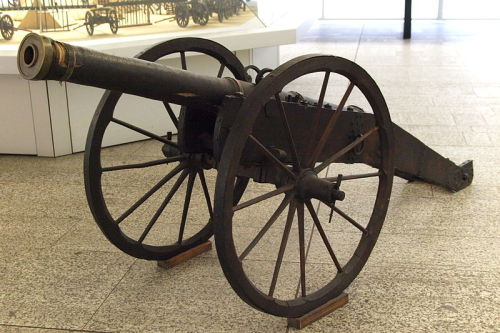peashooter85:The Short Life of the Leather Cannon,Throughout most of the history of gunpowder warfar
peashooter85:The Short Life of the Leather Cannon,Throughout most of the history of gunpowder warfare, there have been many attempts to develop a lighter cannon alternatives to the iron and bronze guns typical of most battlefields. In the 17th century, most field guns were made of bronze, while most naval and heavy siege guns were of heavier iron. Such cannon were very heavy, and thus difficult to transport over rough or hilly terrain. One alternative to traditional guns was the leather cannon. The leather cannon featured a light copper tube which served as the bore. It was then wrapped in layers of string, then layers of leather straps with a final layer of hardened leather. The various layers of rope and leather were strong enough to contain the force of ignition from a gunpowder charge and projectile. Some interesting examples from Asia are also known to have been constructed from nothing but rawhide leather, such as these guns originating from Nepal or Tibet .(http://www.vikingsword.com/vb/showpost.php?p=89568&postcount=1)The first to use leather cannons in combat was the Swedish King Gustavus Adolphus, who utilized such artillery during his campaigns in Scandinavia, Central, and Eastern Europe. Due to the lightness of its materials, the leather cannon had an advantage in that it could be moved by only 2 or 3 men on the battlefield. However the leather cannon had several flaws. First and foremost the leather and rope material of the barrel served as a heat insulator, thus after only a few shots the gun would overheat and become too hot to use. Furthermore, leather and rope was no substitute for metal in terms of strength, and it was not uncommon for such guns to burst, injuring their own users. Due to the its flaws, the leather cannon was short lived and used by few. During the English Civil War the Scots were particularly noted for using such guns. Across the world the Korean Joseon Dynasty also used the leather cannon extensively up to the 18th century, using a layer of grease coated wax in order to dissipate heat. -- source link
Tumblr Blog : peashooter85.tumblr.com

